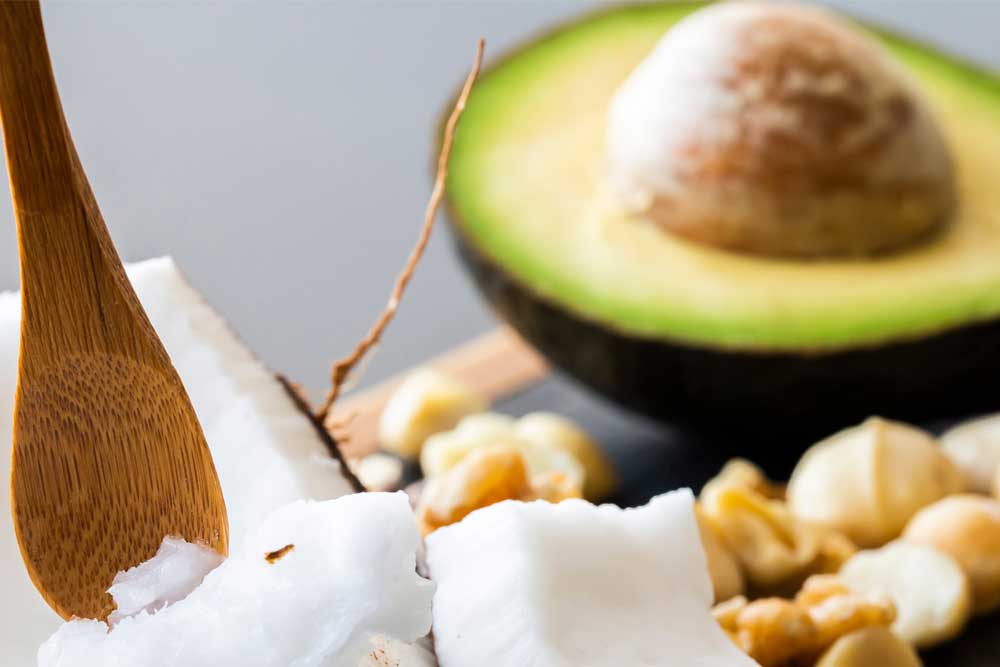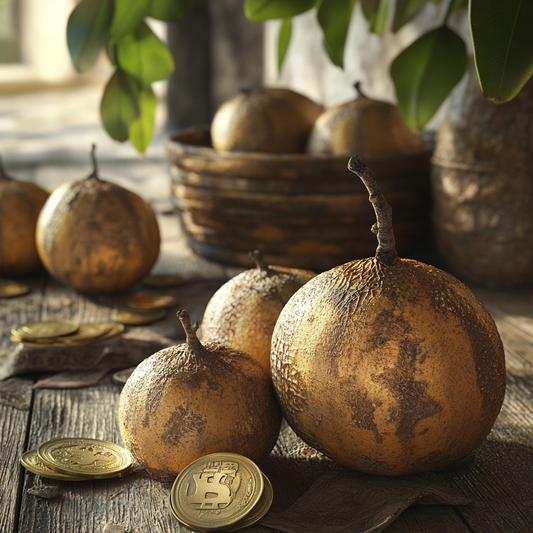For nearly a century, the ketogenic diet or "keto" has been used as a treatment for epilepsy. But now, people have embraced it to lose weight and improve overall health. The latest iteration of the popular diet is "keto 2.0," which has significantly evolved.

What is Keto 2.0?
Keto 2.0 is a term that describes a more holistic approach to the ketogenic diet. It emphasises not just weight loss but also overall health and well-being. Keto 2.0 includes what you eat and how you live your life.
The Key Differences between Traditional Keto and Keto 2.0
One key difference between traditional keto and Keto 2.0 is the emphasis on nutrient-dense, whole foods rather than processed low-carb options. Keto 2.0 encourages the consumption of non-starchy vegetables, high-quality proteins, and healthy fats rather than relying heavily on processed foods and artificial sweeteners.
Another difference is the focus on gut health and including fermented foods and probiotics in the diet, which can improve digestion and support the immune system.
Lastly, Keto 2.0 promotes sustainable eating practices, such as mindful eating and listening to your body's hunger cues, and encourages a balanced approach to eating rather than strict adherence to a specific macronutrient ratio.
The Benefits of Keto 2.0
Following a Keto 2.0 diet can most certainly lead to benefits such as weight loss, improved blood sugar control, and a decreased risk of certain diseases such as diabetes and heart disease. The emphasis on overall health and well-being in Keto 2.0 can also lead to increased energy levels, improved sleep quality, and enhanced mental clarity.
One major benefit of Keto 2.0 is the incorporation of nutrient-dense, whole foods into the diet. This shift away from processed and artificial options can improve nutrient intake and overall health. For example, increasing the consumption of non-starchy vegetables, high-quality proteins, and healthy fats can provide the body with essential vitamins and minerals, helping to support the immune system and promoting optimal bodily function.
Additionally, Keto 2.0 places a strong emphasis on gut health, which can have a significant impact on overall well-being. Incorporating fermented foods and probiotics into the diet can improve digestion, boost the immune system, and promote healthy gut bacteria.
Furthermore, Keto 2.0 promotes sustainable eating practices, such as mindful eating and listening to your body's hunger cues, which can lead to a more balanced approach to eating and a greater sense of control and satisfaction with one's diet.
Keto 2.0 Food List
This food list will provide a comprehensive guide to the types of foods that are included in the Keto 2.0 diet.
Here are some examples of keto 2.0 foods that can be included in your diet:
- Non-starchy vegetables: Leafy greens, broccoli, cauliflower, zucchini, bell peppers, etc.
- High-quality proteins: Grass-fed beef, wild-caught fish, organic poultry, etc.
- Healthy fats: Avocados, olive oil, coconut oil, grass-fed butter, etc.
- Fermented foods: Sauerkraut, kimchi, yogurt, kefir, etc.
- Nuts and seeds: Almonds, macadamia nuts, pumpkin seeds, etc.
- Berries: Raspberries, blackberries, strawberries, etc.
- Natural sweeteners: Stevia, erythritol, xylitol, etc.
It's important to note that in Keto 2.0, eating a balance of macronutrients is not as strict as traditional keto, so you should also include complex carbohydrates such as sweet potatoes, quinoa, and brown rice.
Additionally, Keto 2.0 encourages the consumption of organic, non-GMO, and minimally processed foods when possible. By following this food list, you will be able to fuel your body with nutrient-dense, whole foods that will support optimal health and well-being.
Keto 2.0 Meal Plan
A keto 2.0 meal plan can include a variety of nutrient-dense, whole foods that support overall health and well-being. Here is an example of a daily meal plan:
- Breakfast: 3-egg omelette with spinach, mushrooms, and feta cheese, served with avocado and a side of fermented vegetables such as sauerkraut or kimchi
- Snack: A handful of mixed nuts and seeds, such as almonds, macadamia nuts, and pumpkin seeds
- Lunch: Grilled wild-caught salmon with a side of non-starchy roasted vegetables, such as broccoli and cauliflower A serving of complex carbohydrates, such as sweet potatoes or quinoa A side of fermented vegetables
- Snack: A handful of berries, raspberries or blackberries, with a dollop of Greek yoghurt or kefir
- Dinner: Grass-fed beef stir-fry with non-starchy vegetables, such as bell peppers and zucchini, served over a bed of brown rice A side of fermented vegetables
It's important to note that in a keto 2.0 meal plan, the focus is on nutrient-dense, whole foods and consuming balanced macronutrients. In this meal plan, you can see the inclusion of non-starchy vegetables, high-quality proteins, healthy fats, fermented foods, nuts and seeds, berries, and complex carbohydrates. Additionally, it encourages the consumption of organic, non-GMO, and minimally processed foods when possible.
You can also incorporate more variety in your meal plan by changing proteins like chicken, turkey, lamb, etc., or experimenting with different vegetables and complex carbohydrates. But overall, the goal is to eat nutrient-dense, whole foods that support optimal health and well-being.
Keto 2.0 Recipes
Here are a few delicious and easy-to-make Keto 2.0 recipes:
- Creamy Garlic Shrimp with Zucchini Noodles: This recipe features wild-caught shrimp, sautéed in garlic and butter, served over a bed of spiralized zucchini noodles. It's a low-carb and gluten-free alternative to traditional pasta dishes.
- Keto 2.0 Shepherd's Pie: This recipe is a classic comfort food made keto-friendly by using a cauliflower mash instead of traditional potatoes. It's filled with ground beef, vegetables, and spices; all topped with a creamy cauliflower mash.
- Keto 2.0 Fried Rice: This recipe is a low-carb and gluten-free alternative to traditional fried rice. It's made with cauliflower rice, vegetables, and a variety of keto-friendly sauces, such as coconut oil and sesame oil.
- Keto 2.0 Berry Cheesecake: This recipe is a delicious and healthy dessert option for anyone following the Keto 2.0 diet. It's made with a crust of almond flour, coconut flour, and butter and filled with a creamy mixture of cream cheese, berries, and natural sweeteners.
- Keto 2.0 Stuffed Peppers: These stuffed peppers are a tasty way to incorporate more vegetables into your diet. They are filled with a mixture of ground meat, cheese, and spices and are a perfect option for lunch or dinner.
These recipes are just a few examples of the many delicious and healthy meal options available on a Keto 2.0 diet. Feel free to experiment with different ingredients and flavors to find the meals that best suit your taste and dietary needs.
Conclusion
In conclusion, the Keto 2.0 diet is a modern and sustainable approach to the traditional ketogenic diet, focusing on nutrient-dense, whole foods and a balanced macronutrient intake. The goal is to support optimal health and well-being while promoting weight loss and metabolic benefits. By incorporating more non-starchy vegetables, high-quality proteins, healthy fats, fermented foods, nuts and seeds, berries, and complex carbohydrates, you can enjoy a wide variety of delicious and satisfying meals. It's important to note that the Keto 2.0 diet encourages the consumption of organic, non-GMO, and minimally processed foods when possible. With the right meal plan and delicious recipes, the Keto 2.0 diet can be a healthy and satisfying way to achieve your health and weight-loss goals.
References
4. Paoli, A., Bosco, G., Camporesi, E., Mangar, D. (2018). Ketogenic diet in neuromuscular and neurodegenerative diseases. BioMed Research International. 2018, 1-18.





